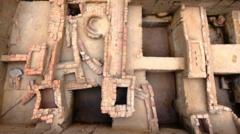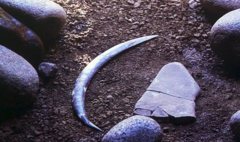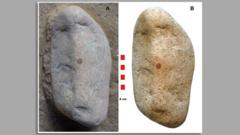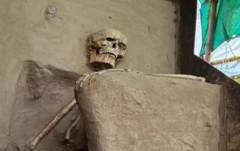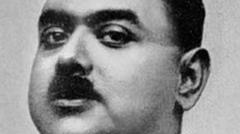Despite centuries of study and various theories, the Indus script remains one of the most perplexing scripts in human history, with modern approaches leveraging computer science to uncover potential patterns.
**Decoding the Indus Script: The Million-Dollar Challenge to Unearth Ancient Mysteries**
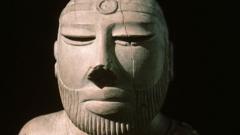
**Decoding the Indus Script: The Million-Dollar Challenge to Unearth Ancient Mysteries**
Recent efforts to decipher the Indus script have gained momentum with a new one-million-dollar prize offered for solutions, drawing interest from various individuals globally.
Every week, computer scientist Rajesh PN Rao receives numerous emails from hopeful individuals claiming to have deciphered the enigmatic Indus script, a series of symbols primarily found on ancient stone seals. Many of these amateur codebreakers hail from India or are of Indian origin living abroad, believing they hold the key to understanding a civilization that thrived over 5,300 years ago. Rao, an esteemed professor at the University of Washington, notes that these attempts often arrive with a sense of finality, asserting "the case is closed."
Recently, the quest has been invigorated by MK Stalin, the chief minister of Tamil Nadu, who announced a substantial prize of $1 million for anyone who can decode the script. The Indus Valley Civilization, known for its sophisticated urban centers in modern-day northwest India and Pakistan, has intrigued scholars since the discovery of its sites, with around 2,000 locations identified to date. However, the reasons for its decline remain a mystery, particularly given the absence of evidence for conflict, famine, or catastrophic events.
The most significant enigma lies in its undeciphered script, which shrouds the civilization's language, governance, and beliefs in obscurity. Linguists and archaeologists have attempted to link the script to various languages, including early Brahmi and Sumerian, alongside theories suggesting it may consist of symbols representing political or religious content. Asko Parpola, a prominent indologist, emphasizes the importance of the Indus script as one of history’s most significant undeciphered writing systems.
Complicating efforts to decode the script is the limited number of inscriptions—about 4,000, most of which are compact and found on small items like seals and pottery. Rao highlights that these inscriptions seldom exceed five symbols or signs and lack extensive texts available in other ancient languages, which significantly hampers understanding. Unlike the Rosetta Stone, which assisted in deciphering Egyptian hieroglyphs through a bilingual text, no equivalent artifact exists for the Indus script.
Current endeavors focus on employing computer science methodologies to unravel the script’s mysteries. Researchers, including Nisha Yadav from the Tata Institute of Fundamental Research in Mumbai, are analyzing the dataset of signs found in the script using statistical and computational methods. This initiative has identified notable patterns, with 67 symbols accounting for roughly 80% of the inscriptions analyzed. Initial findings suggest that there may be an inherent structure within the script, though the precise meaning of these symbols remains uncertain.
Academic discourse anticipates that the challenges posed by the Indus script parallel those encountered by other undeciphered writing systems, including Proto-Elamite and Linear A. While certain scripts, like Rongorongo and Zapotec, are tied to known languages, their meanings remain elusive. The Phaistos Disc from Crete also resembles the Indus script's challenges due to its singular known example and unknown language.
In an intriguing twist, Stalin's announcement for a deciphering reward coincides with a recent study by K Rajan and R Sivananthan, which draws connections between Indus Valley script elements and graffiti from Tamil Nadu. Their analysis showed notable parallels, suggesting cultural exchanges between the civilizations. Many believe Stalin's prize announcement is a strategic move to promote Tamil heritage, particularly in contrast to the ruling Bharatiya Janata Party (BJP) led by Narendra Modi.
Despite the ongoing excitement surrounding the prize, scholars are skeptical that anyone will soon claim it. With comprehensive databases of inscribed artifacts being compiled, researchers remain primarily in the dark regarding the content of the ancient script. Yadav encapsulates the sentiment: “What did the Indus people write? I wish we knew.”

